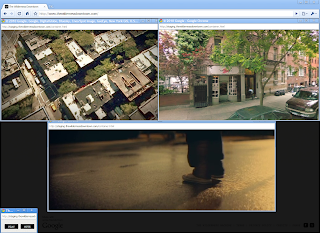
Nearby Friends is a Google Maps based Facebook application that utilises the new Facebook Places check-in facility. The application allows you to view all your friends check-ins on one Google Map.
Nearby Places doesn't just show your friends' latest check-ins it also allows you to visualise their entire check-in history. If you click on any of your friends' thumbnail pictures displayed on the Google Map you can choose an option to view their 'Check-in History'.
When you select to view the check-in history of a friend you are presented with a Google Map showing all their check-ins. Each check-in is represented by a profile picture. The larger the picture the more recent the check-in. Each individual check-in is also connected to the next check-in with a polyline. Therefore you can click on the largest profile picture and track your friend's check-ins backwards all the way to the womb (well maybe not that far).









